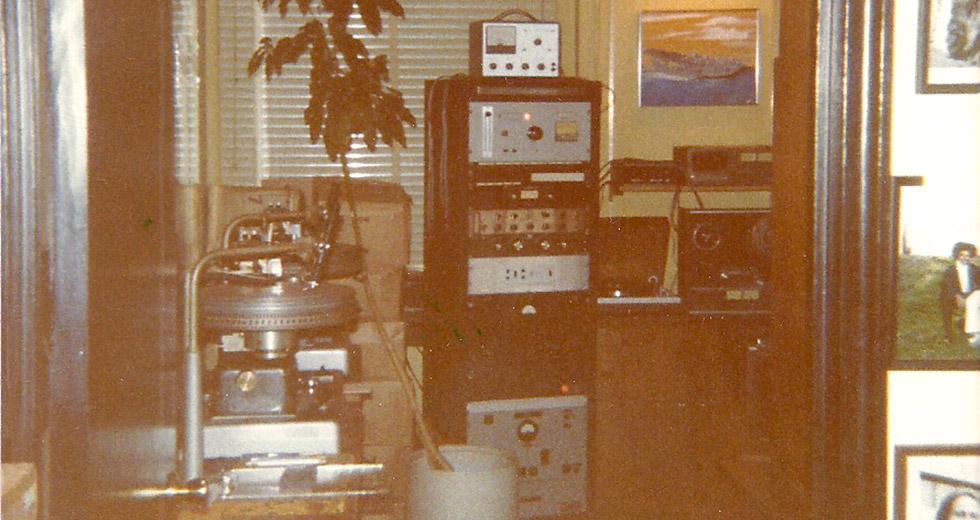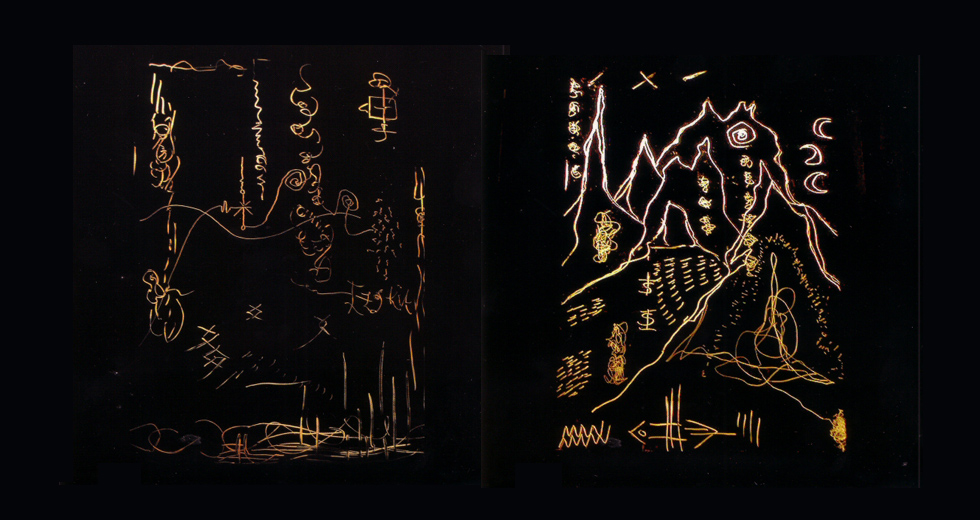The Legend of the Rhythmicon, the World’s First Drum Machine

The drum machine is so integral to music nowadays that terms like MPC and 808 have become part of the English lexicon. Across the world, you’ll find plenty of analog geeks eager to scour thrift shops for a good deal on a vintage machine — and maybe some dusty ROM memory cards to go with it. There’s one machine, however, that you likely won’t stumble across.
Built in the early 1930s by Russian inventor Leon Theremin at the request of American composer Henry Cowell, the Rhythmicon was a quirky, clunky, keyboard-based machine that was able to play complex polyrhythms in precise loops. It didn’t have a long or glorious run – Cowell only wrote a couple pieces for it before moving on – and today it is largely forgotten. Yet it remains a legendary relic of early electronic music, regarded by some as a major stepping-stone in the development of sequenced, digitized beatsmithery.
The Rhythmicon was never mass-produced. Only three models were ever made. One of them has been lost to the sands of time – depending on whom you ask, it was either tossed in the trash by a janitor at Columbia University or disposed of by staff at Stanford’s psychology department. Another model was last seen in storage at the Smithsonian Institution.
As for the third Rhythmicon – a Russian model built out of junk parts by Theremin in the mid-’60s – it’s currently in safe keeping at the Theremin Center of the Moscow Conservatory.
It’s a very nice noise machine.
Andrey Smirnov, an artist, curator and instrument collector, got his hands on this smaller, DIY version of the Rhythmicon and refurbished it in 2004. Speaking by Skype from his home in Moscow, he says the machine is still in working order, though it usually requires a tune-up before you turn it on. But like most Rhythmicon experts, he believes this contraption is more valuable for its novel mechanics than for its potential as an actual musical instrument.
“You can’t start the rhythm from the first measure. It’s always on,” he says, noting that it’d be highly impractical to perform with live. “It’s a very nice noise machine.”
The Rhythmicon is universally regarded as the world’s first drum machine, but technically it’s not a “drum” machine. As opposed to other early devices, like the Chamberlin Rhythmate (introduced in 1957) or the Wurlitzer Sideman (1959), it doesn’t play beats according to typical time signatures. Instead it offers up a series of complex rhythmic pulses, each playing at a different pitch and each corresponding to different ratios from the harmonic series.
The problem was that your average piano player simply couldn’t perform such mind-boggling feats. He needed a device that could do it for them.
Cowell, who was born in 1897 and died in 1965, is probably best known for composing with “tone clusters” – chords built out of adjacent notes that he’d play on the piano with his fist or forearm. But he commissioned Theremin to build the Rhythmicon because he was hoping to bring to life another radical idea he’d been working on throughout the 1920s: Taking the infinite multiples of a fundamental wavelength (for example, 1/2, 1/3, 1/4, 1/5, 1/6, and so on) and transposing them into beats.
In his 1930 book New Musical Resources, Cowell illustrates this principle with a score of a two-bar piece written for a trio. While one player performs a descending figure of four beats, the second player performs a triplet, and the other player a quintuplet. Cowell writes that these phrases would be played in unison to create a complex polyrhythm: “The conductor of such a trio, by giving one beat to a measure, could lead all the voices together; for the measure, no matter what time divisions it included, would begin and end at the same instant.”
He called this “rhythmic harmony,” but it didn’t stop at mere quarter notes and triplets. In other examples he stacked sextuplets onto septuplets, and octuplets atop decuplets... writing it all down using special notation marks he devised himself. The problem, of course, is that your average piano player simply can’t perform such mind-boggling figures. So with a $200 budget, he commissioned Theremin – already celebrated for having invented the “theremin” musical instrument – to create a device that could do it for them. (A second Rhythmicon was later paid for by avant-garde composer Charles Ives and given to Cowell and the conductor Nicolas Slonimsky.)
The Rhythmicon was really a conceptual leap.
The Rhythmicon relied on photoelectric technology to get the job done. The keys were each connected to a light that turned on when you pressed them. The lights then shined through a sequence of holes punched into two discs that rotated via a motor. On the other side of the discs was a photoelectric sensor that, when activated by the patterns of light, sent the Rhythmicon’s unique signals to a tube amp and thus to a speaker and out to dazzled audiences.
It was a novel mechanism but, according to Margaret Schedel, also a groundbreaking development in music. In her 2002 academic study Anticipating Interactivity: Henry Cowell and the Rhythmicon, she writes that music instruments up to that point required a connection between “gesture and output.” That is, to play a violin you needed to bow it; to play a saxophone you had to blow into it and know the fingerings. But the Rhythmicon introduced an unprecedented element of “interactivity,” letting you simply press a key to activate a sequence – much like you can do today with the arpeggiator of a keyboard or a button on a sampler cued to a drum break.
“It actually distances the musical action from the action of the performer, if you can think of it that way,” Schedel says. “This was really a conceptual leap.”
Unfortunately, as revolutionary as the Rhythmicon was, it suffered from a number of limitations. Since it had a relatively limited palette of sounds, nuanced phrasings and accents were out of the question. Transporting the thing could also be tricky because, as one colleague of Cowell’s put it, the Rhythmicon was “capricious and subject to fits of musical distemper.”
Maybe the biggest setback was that it just didn’t sound that good. One reviewer, after seeing the Rhythmicon demonstrated with violin accompaniment at a 1932 concert in San Francisco, likened its lower tones to “a cross between a grunt and a snort” and higher notes to “an Indian war whoop.” The 1960s Rhythmicon isn’t that much more sophisticated – as a demo video posted on YouTube in 2009 shows, the thing sounds like it’s making geese calls.
Still, the Rhythmicon has managed to sneak its way into the lore of music history. A handful of highly implausible tall tales have circulated about it over the years: Fred Astaire tap-dancing with a Rhythmicon on a movie set in 1933; Joe Meek rescuing a Rhythmicon from a New York pawn shop in the 1950s; Pink Floyd jamming with a Rhythmicon on their 1970 album Atom Heart Mother.
Meanwhile, musicians have reimagined the device using computer software, composing pieces on virtual and online versions that feature expanded rhythmic intervals and more nuanced phrasings and tones. All of this is enough to make you wonder what could be done if musicians embraced the Rhythmicon – or at least the idea of the Rhythmicon – today. What if, say, Skrillex incorporated it into a new live set?
“He would, and he would probably make that bitch sound good,” Schedel says. “He would just amplify the shit out of it. He’d transpose it, amplify it, spatialize it. He would not make it sound anything like the original.
“Or Björk,” she adds. “Björk would have some giant hamster in a wheel running the damn thing.”

